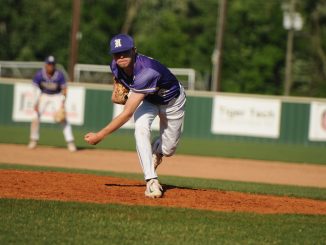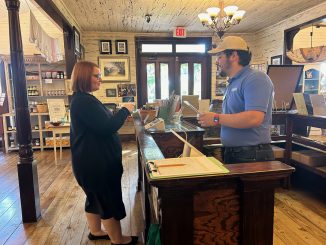
By LSU AgCenter Horticulturists Dan Gill, Kyle Huffstickler and Allen Owings
Frost has settled over the majority of the state. This means many of our warm-season lawn grasses are going dormant for the winter. December begins the bleak time of the year for warm-season turf grasses in Louisiana.
Because warm-season grasses, such as centipede grass, St. Augustine grass, zoysia and Bermuda grass, are not actively growing from December through early March, nitrogen fertilization should cease on home lawns unless they are over-seeded with rye grass. Nitrogen fertilizer on dormant turf grasses can lead to increased brown patch and “winterkill.” Also, nitrogen applications during this time have a greater potential for movement into groundwater.
Although many home lawns do not require regular mowing or fertilization now, it’s an excellent time to have your soil tested. Take one pint of soil to your parish LSU AgCenter office. Soil samples should be a composite of soil plugs 4 inches deep from various places around the lawn. Specify the type of grass you are growing.
A soil test will give you the soil’s pH and provide valuable information on its current nutrient status.
This aids in helping determine a fertilization program for next year.
A few homeowners in Louisiana over-seed their warm-season lawns in October and November. Remember, it will take a warm-season lawn that has been over-seeded longer to start growing and looking good next spring.
Many times the perennial rye grass which is used as the over-seed will hang around through May. This will compete with growth of the warm-season species come next spring.
Postpone until spring establishing any permanent, warm-season turf grass from seed.
Sod can be laid during winter if necessary, but remember to keep it moist to prevent it from drying out and dying. Establishment is best left until mid-spring, well after spring green-up.
The Louisiana Department of Agriculture and Forestry has joined with LSU football coach Les Miles and the Louisiana Turf grass Association to promote Louisiana-grown sod. So if you’re putting in a new lawn, consider purchasing Louisiana-grown turf grass.
Brown patch diseases can come and go throughout the winter if the weather is mild. This is common on St. Augustine grass in the southern part of the state when the lawn is in partial dormancy.
Check the label to see if the fungicide you want to purchase will control this particular disease. Damage from brown patch will slow spring green-up, and affected areas will remain unsightly until warmer spring weather conditions allow for turf grass recovery.
Warm-season turf grasses may show signs of green-up in southern Louisiana in late February and by early to mid-March in north Louisiana. Do not push turf grass growth with fertilizer.
Fertilizer applied too early will feed the winter weeds, and fertilizer applied too heavily will result in lush growth that is more susceptible to injury from late frosts or brown patch.
Let the grass green up gradually, and do not fertilize until after two or three mowings in early spring.
Also, manage irrigation to your lawn and water only when needed.
Many times, Louisiana lawns suffer from excessive irrigation, which leads to increase disease problems.




Be the first to comment